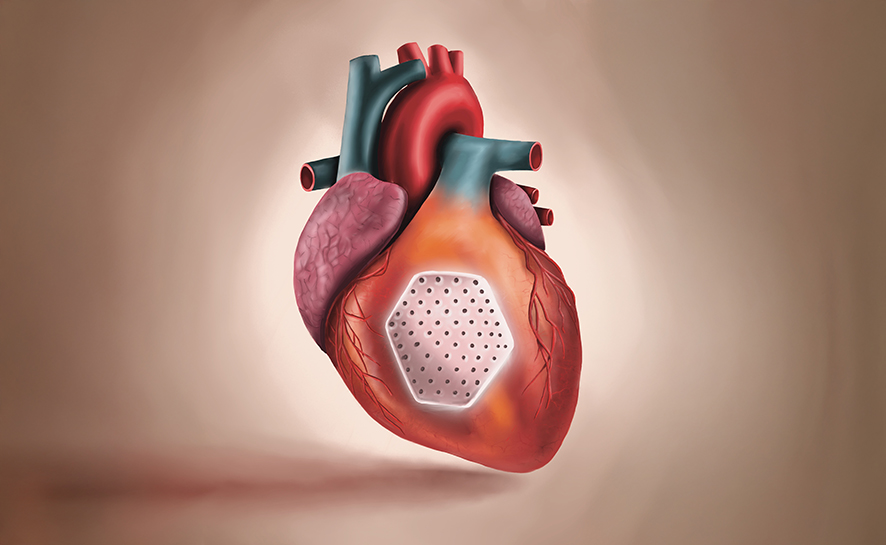Scientists have developed a new therapy for treating heart failure patients. Their concept involves “patching” the heart with “patches” grown from stem cells that have been transformed into heart muscle cells.
Scientists from the University Medical Center in Göttingen and the University Medical Center of Schleswig-Hochstein are behind the research. It was published in the prestigious journal Nature (DOI: 10.1038/s41586-024-08463-0).
In the study, the researchers took blood cells and “reprogrammed” them into heart muscle cells – cardiomyocytes. They then embedded them in a collagen gel and cultured them in a specially made mold. This created hexagonal slices, consisting of 200 million living cells, which can be implanted into the heart to help it work.
The researchers first tested the patches on healthy royal macaques. The transplants caused no side effects. The patches were then transplanted into animals with diseased hearts. The researchers were able to show that the implanted heart patches, consisting of 200 million cells, enabled the restoration of the heart muscle.
After the macaques, the researchers attempted to implant their patch in a 46-year-old woman with advanced heart failure. The patch was made from human cells obtained from an anonymous donor. After three months, the patient, whose condition was stable, received a new human heart.
Clinical trials involving 15 people who were implanted with the patches are currently underway.
The doctors decided not to use the patient’s own cells, as the process of growing the patches would take too long and be too expensive. The solution they proposed instead, requires the use of immunosuppressive drugs that suppress the work of the immune system, preventing it from attacking a patch made of “foreign” tissue.
The researchers stress that the goal of the therapy is not to replace whole heart transplants. They focus on helping patients who have been waiting for a transplant for a long time and for whom the risk of death is very high.
Sources: Nature, Guardian, phys.org, www.umg.eu







